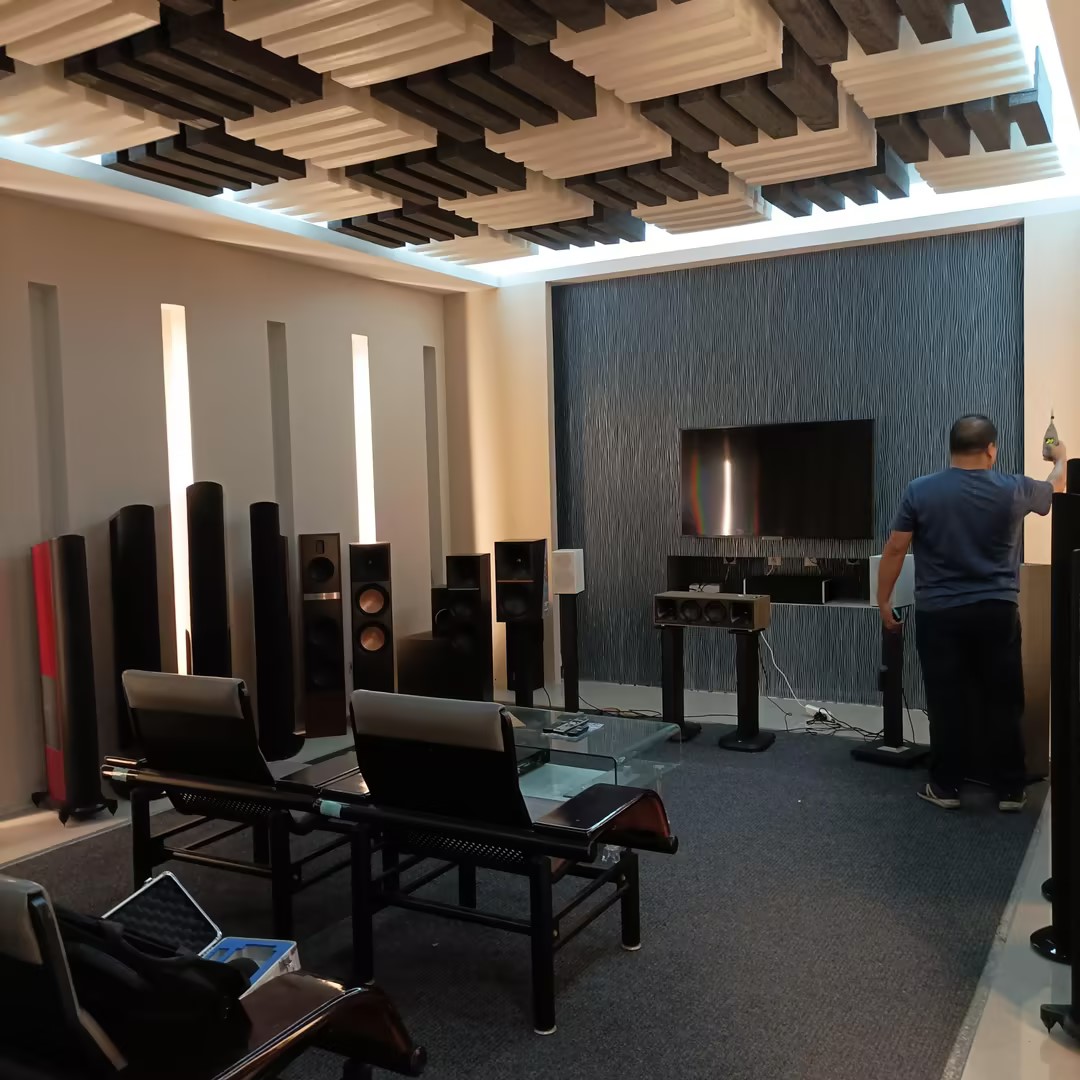Although audiovisual rooms and acoustic reverberation rooms both involve the processing and propagation of sound, there are significant differences in functional positioning, design goals and practical uses:
Home Theater or Listening Room:
Main purpose: To provide individuals or families with a comfortable, private viewing, music and gaming experience similar to a cinema or professional recording studio.
Design focus: taking into account sound quality and visual effects, focusing on speaker layout, room acoustic treatment (such as sound absorption, diffusion and sound insulation), lighting and seating layout, etc., to create the best audio and video immersion experience and appropriate reverberation time (usually longer short for clarity).
Function: Mainly used for daily entertainment, such as watching movies, listening to music, game entertainment, family gatherings, etc.
Acoustic characteristics: Sound-absorbing materials may be used to reduce unnecessary echoes and standing waves, and diffusers may be used to improve the uniformity of the sound field to obtain a smooth frequency response and a broad sound image.
Acoustic Reverberation Chamber:
Main purpose: used for scientific research, industrial testing and the development and evaluation of acoustic products, such as measuring the sound absorption coefficient of materials, sound power of equipment, sound quality evaluation, etc.
Design focus: Ensure that the indoor sound field is highly uniform, minimize sound wave absorption, and form an acoustic environment with sufficiently long reverberation time and comprehensive reflection.
Function: Conduct acoustic measurements, testing, research, and calibration and verification of acoustic components and equipment performance.
Acoustic characteristics: Walls and ceilings are usually made of smooth, hard and highly reflective materials to retain sound waves to the maximum extent and extend the reverberation time; if necessary, the mixing can be changed by adjusting internal variable sound-absorbing materials or devices. response time to adapt to different testing needs.
Therefore, the audio-visual room focuses on providing a comfortable and vivid home entertainment space, while the acoustic reverberation room focuses more on rigorous acoustic experiments and testing environments.

